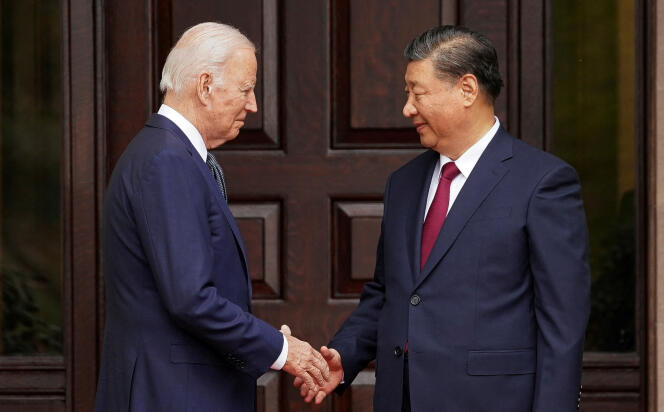President Biden and his Chinese counterpart President Xi Jinping met face-to-face in San Francisco on Thursday after a long pause of almost one year. Wherein the most contentious issues relating to bilateral relations of the world’s competing superpowers, global politics, security and trade issues, particularly the Taiwan dispute, Chinese ingress in the South China Sea, the war in Ukraine, the Middle East crisis, North Korea and Iran, and Afghanistan came under discussions. The Biden-Xi summit has brought about two significant agreements, on curbing fentanyl production and on military-to-military communications between long-held adversaries.
Historically, the Biden-Xi summit was a long-awaited high-profile meeting between the top leaders of the United States and the People’s Republic of China (PRC) that could only be possible as a part of the Asia-Pacific Economic Cooperation (APEC) forum. It was the first face-to-face encounter between President Biden and Chinese Strongman since the G20 meeting in Bali in late 2022. The summit aimed to establish a framework for healthy, competitive and stable relations between the two global powers amid rising tensions over issues such as Taiwan, trade competition, human rights allegations and the ongoing tussle in the cybersecurity domain. The major goal of the highly advertised Biden-Xi meeting was to reduce confrontation and increase cooperation between the global contenders, who aim at defeating each other but avoid direct clashes to preserve their energies for future interventions and global supremacy.
Over the past years, the US-China competition has increasingly expanded in multiple spheres from defence and security arenas to trade and tourism, from Space and cyberspace to technology, IT and manufacturing. At the same time, the competing nations are rapidly expanding their military and economic influence in various parts of the world from Europe to Solomon Islands, and from the Middle East to Latin America and Western Sahara. Washington’s prickly politics on the issues of human rights, democracy and civil liberties has caused significant challenges for Beijing within its territorial jurisdiction concerning Taiwan, Hong Kong and Xinjiang. Meanwhile, the US has forged multiple alliances, partnerships and security mechanisms in East Asia that practically encircled China from all four directions. Ranging from military agreements with Australia and the Philippines, the Quad political partnership among the US, India, Australia and Japan, and defence and security ties with Seoul, Tai Pei, and Hunoi coupled with high-level US-India economic and strategic partnership. All those anti-Beijing arrangements together with sanctimonious trade and regulatory policies seriously undermined US-China relations and pushed both adversaries to the edge of a direct clash.
The Biden administration has resolutely haunted down its staunch enemy in all spheres but is scared of any confrontation or clash that might derail its strategy or vice versa. Owing to those concerns, US officials had been endeavouring to establish a channel of communication with Beijing on the government-to-government and military-to-military levels to avoid any misunderstanding and confusion. During the recent summit, both nations agreed to curb the production and supply of fentanyl, resumption of military-to-military dialogue and crisis communication mechanisms, affirmation of one-China policy and peaceful resolution of cross-strait issues, increase cooperation in climate change and remove unfair practices in the trade.
The American Strategists have tactfully bartered vital US interests in the ploy of a one-China policy. Meanwhile, Xi’s aides could not get any assurances from Washington for not meddling in China’s domestic affairs, unfair handling of Chinese businesses and tech giants, along harassing Chinese allies and partners in different parts of the world.
In fact, a stable and cooperative relationship between China and the US is vital for addressing global political needs, including economic stability, conflict resolution, and collective responses to global challenges, whereas, tensions between them can have far-reaching consequences for them as well as for rest of the world. Both adversaries are engaged in an open competition, and their confrontation and cooperation move side by side. Apparently, teamwork and competition are a necessity for both competitors to reach decisive victory.







